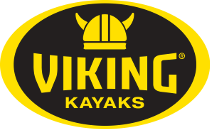
Without question, the removable Tackle Pod is the centerpiece of the Viking Kayaks Profish Reload.
By Paul Lebowitz
Photos by Aaron Schmidt
Ever thought you could build something you love better? New Zealander Grant Montague must have.
Montague talks the kayak fishing talk. It’s obvious he’s paddled more than a few strokes and caught quite a few fish. He says he’s still active in New Zealand’s kayak fishing tournament scene. It’s a rare skill set for the owner of a kayak company, in this case, Viking Kayaks.

The Tackle Pod, and its cassette. The opening is wide enough for large transducers, and can even be plumbed as a bait tank.
Montague’s kayak fishing path is a familiar one. One day at a family beach gathering, he spotted fish busting just offshore. He grabbed a small recreational kayak, battled his way through the surf with a fishing rod, then tossed a lure over the side. Thirty minutes later he was paddling in with dinner for the family. Sounds familiar, right?
It’s at this point his road diverges. Montague fell so madly in love with kayak fishing, he launched a company to build his perfect fishing boat.

The Profish Reload is sleek, low-slung and deadly.
The local kayak fishing community brought Montague into the orbit of Stephen Tapp. “He’s the kayak fishing guru down under. He’s written columns for the New Zealand Fishing News for years. He’s a really detailed guy, with so much passion,” Montague says.
Now they work together. “With his energy combined with mine, at 5 o’clock when it’s time to knock off, we trade ideas over beers,” Montague says.

A round hatch right in front of the cockpit doubles as a bilge pump scupper.
Those ideas and a lot of time on the water produced the Viking Profish Reload, now distributed by Yak-Gear andavailable in the US. It’s a sleek and predatory missile, low to the water, with sexy curving lines. It is a paddler’s fishing kayak meant to tackle rough water, and fully customized for serious offshore fishing.
“A wider fishing kayak is perfect for how most people fish in the US. To stand up and sight cast makes perfect sense. In New Zealand, we’re going offshore, through surf. On tournament day you can count on 20-knot winds. We need something with good speed,” Montague says.

The Chill Pod, a fish storage system, fits is available for the tankwell.
The first digital drawings for the Profish were produced in 2011. “It took a lot longer than we expected. We kept changing things,” he says.
The Tackle Pod System is the obvious Profish centerpiece. It’s a removable sonar console and storage area with direct water contact in the front for superior sonar performance. It pulls off some other neat tricks. There’s a tube inside for neatly coiling all that excess transducer wire, and plenty of room to store tackle close at hand.
“At competitions, everyone had a big bin of gear. From that big bin you’d get the pile of crap to take with you,” Montague says. But sometimes in the rush of the morning, key gear didn’t make it into the kayak. Ever left your battery on the charger and not realized it until you’re three miles out? Montague might have.
“It hit us that if you have a drop-in console you can have all your gear packed up and ready, including your battery and fishfinder,” he says.
It’s also meant to be plumbed through a nearby bilge pump scupper for use as a bait tank. Montague points out that the weight of a bait tank is better handled by placing it in the center rather than in the stern, where it can throw off the trim.
The pointed Profish bow is made for breaking chop and riding over waves without catching wind or shedding speed. It’s atypical in a couple of respects. There’s a large bow hatch, but it’s located close to the cockpit and pitched backwards. It’s big enough to stash two-piece rods. The lengths of bungee on the nose will hold a paddle blade, but they also work in conjunction with indents in the hull as horizontal rod holders – a stashing place for busting through surf.
The seat is down low in the Profish, enhancing stability, but it also allows for a raised thigh area that comfortably distributes an angler’s weight. “You wouldn’t believe how much time we spent on that seat. If you’ve got a sore butt, you can’t wait to get in,” Montague says.
There’s a tankwell – pretty standard – with an optional fish box. The tail is something else, unlike most kayaks I’ve ever seen. It is stretched out, lengthening the keel. There’s room for a rudder, but it is special. It doesn’t have an uphaul line. You can paddle the Profish right onto the beach with the rudder down. It won’t be a problem. It is wide rather than long; its bottom sits even with the bottom of the hull.
“We’re passionate about fishing. An hour can easily turn into six,” says Montague. Particularly if it is in your dream boat.

The Profish bow is meant for holding rod tips during a dash in through the surf.



.png)

.jpg)
.jpg)
.jpg)


